Gardenia is the most popular flowering plant and makes a great choice for indoor and outdoor gardens. Growing Gardenias in pots is an easy way to add a touch of color to any space, but it’s important to know how to care for them properly. There are many different types of Gardenia, each with its unique beauty. Gardenias come in various colors, from white to light pink, and can be found in various shapes and sizes.
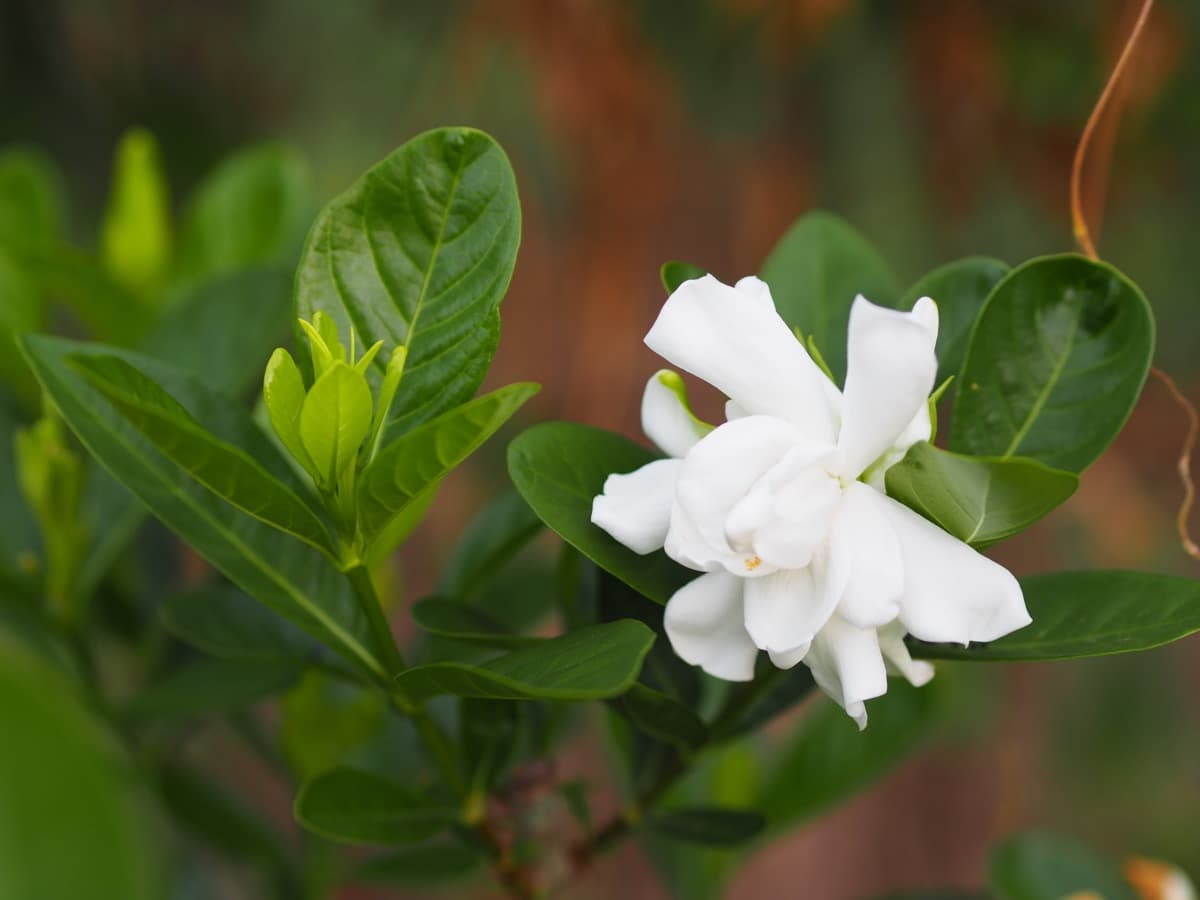
Some Gardenias are small and delicate, while others are large and bold. No matter what type of Gardenia you choose, you’re sure to add a touch of elegance to your home or garden. Growing Gardenias in pots are the best way to bring the beauty of these fragrant flowers into your home or outdoor living space. You can have a thriving pot full of Gardenias with proper care and attention all year.
How to grow and care for Gardenia in pots
Types of Gardenia plants
- Aimee – There are many different types of Gardenia, but the Aimee variety is one of the most popular. This variety is known for its beautiful white flowers and sweet fragrance. If you live in a cooler climate, you can still grow Gardenias by keeping them indoors or in a greenhouse.
- Fortuniana – It has glossy, dark green leaves and large, white flowers that are heavily scented. Fortuniana is an evergreen shrub that will reach a height of 6-8 feet and a width of 4-6 feet at maturity.
- Buttons – There are many different Gardenia buttons, each with its unique shape, size, and color. The most common type of Gardenia button is the round, white button. Other popular types include the oval red button, the heart-shaped pink button, and the star-shaped yellow button.
- Crown Jewel – This Gardenia has glossy green leaves and white flowers with a yellow center. The flowers are about 2 inches wide and have a strong fragrance. Gardenias bloom from late spring through summer.
In case you missed it: How to Grow Gardenias from Cuttings: A Detailed Guide to Planting to Harvest
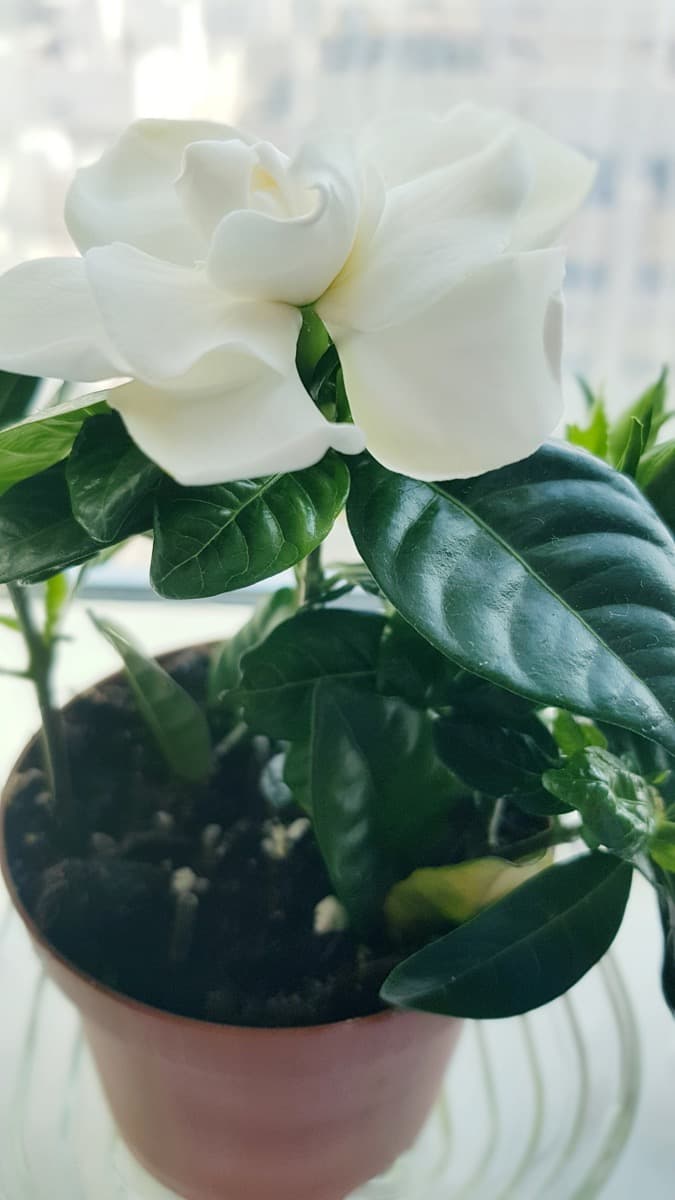
Climate suitable for growing Gardenia in pots
Gardenias are beautiful, fragrant flowers that can add a touch of elegance to any home. They are easy to care for, making them the best choice for those who want to add color to their space without putting in too much effort. However, Gardenias require specific conditions to thrive, and not all climates are suitable for growing them in pots. If you live in mild winters and warm summers, you should have no problem growing Gardenias in pots.
However, if your winters are particularly cold or your summers are very hot, it may be best to stick with other flowers. Gardenias prefer temperatures that remain above freezing during the winter months, so they will not do well in areas where the temperature dips below this regularly. Similarly, they can suffer from heat stress during the summer if temperatures routinely rise above 30°C. Providing your Gardenia with the proper care will reward you with beautiful blooms that fill your home with their signature fragrance.
Soil requirement for growing Gardenia in pots
When growing Gardenias in pots, choosing suitable soil for the plant is important. Gardenias prefer slightly acidic soils, so look for a potting mix or soil with a pH between 5.0 and 6.5. Add peat moss to the potting mix to lower the pH. Gardenias also like well-drained soils, so make sure the pot you choose has drainage holes in the bottom.
You may also consider adding some organic matter to the potting mix to help improve drainage and aeration. To create an optimal growing environment, look for a potting mix containing sphagnum peat moss, perlite, or sand. For best results, repot Gardenias every two to three years using a fresh potting mix.
In case you missed it: 17 Best Flowering Succulents: For Indoors and Outdoors
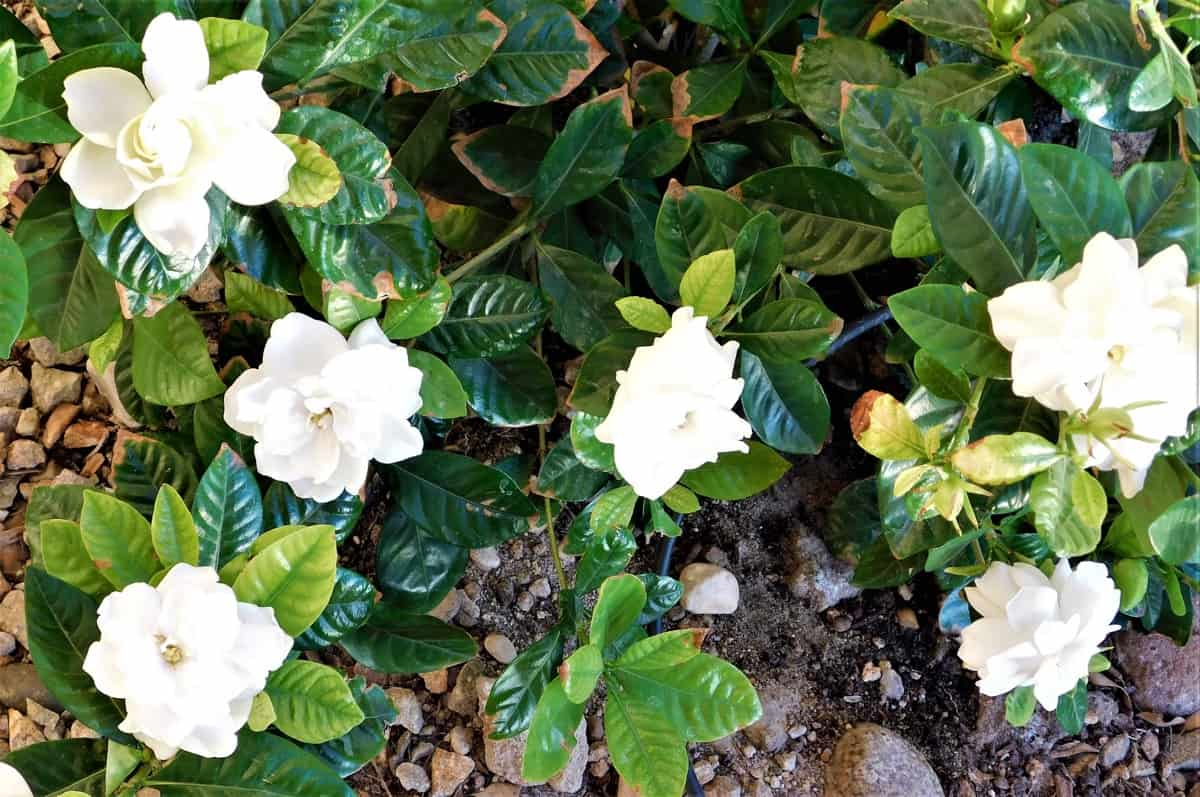
Water requirement for growing Gardenia in pots
- When growing Gardenias in pots, it is important to ensure they have enough water. The perfect way to do this is to water them regularly and deeply. Gardenias need at least 1 inch of water per week. They may need even more water if the weather is hot or dry. You should check the soil before watering to ensure it is not already moist.
- Check the soil before watering; only water when the top few inches are dry. Gardenias in pots must be watered during the growing season every 5-7 days. In winter, they may only need to be watered once a week or even less. Overwatering is harmful as underwatering, so keep an eye on the soil and only water when necessary.
- In addition to regular watering, Gardenias will also be misted with water every few days. This helps increase humidity and keeps the leaves from drying out. You may need to mist your Gardenias daily if you live in a dry climate.
Pot size required for growing Gardenia
When choosing a pot for your Gardenia, make sure it is at least 12 inches in diameter and has drainage holes. The too-small pot will not provide enough room for the roots to grow, and a pot without drainage holes will cause the plant to become overwatered. Gardenias are tropical plants that require a pot with good drainage.
A terra-cotta pot with a hole in the bottom is ideal. You can also use a plastic pot with drainage holes. Be sure to choose a large pot to accommodate your plant’s roots. If you are growing multiple Gardenias in one pot, ensure each plant has its drainage hole. To ensure proper drainage, add gravel or pebbles to the bottom of the pot.
Propagation of Gardenia
From cuttings
To propagate Gardenias, you must take some stem cuttings from a healthy plant. You can do this in late spring or early summer. Choose a spot on the stem with new growth and cut just below a leaf node. Cuttings should be about 4-6 inches long. Once you have your cuttings, dip the ends into rooting hormone and plant them in a pot filled with moistened potting mix. You should keep the soil moist but not soggy.
In case you missed it: 19 Types of Yellow Flowering Plants for Your Garden
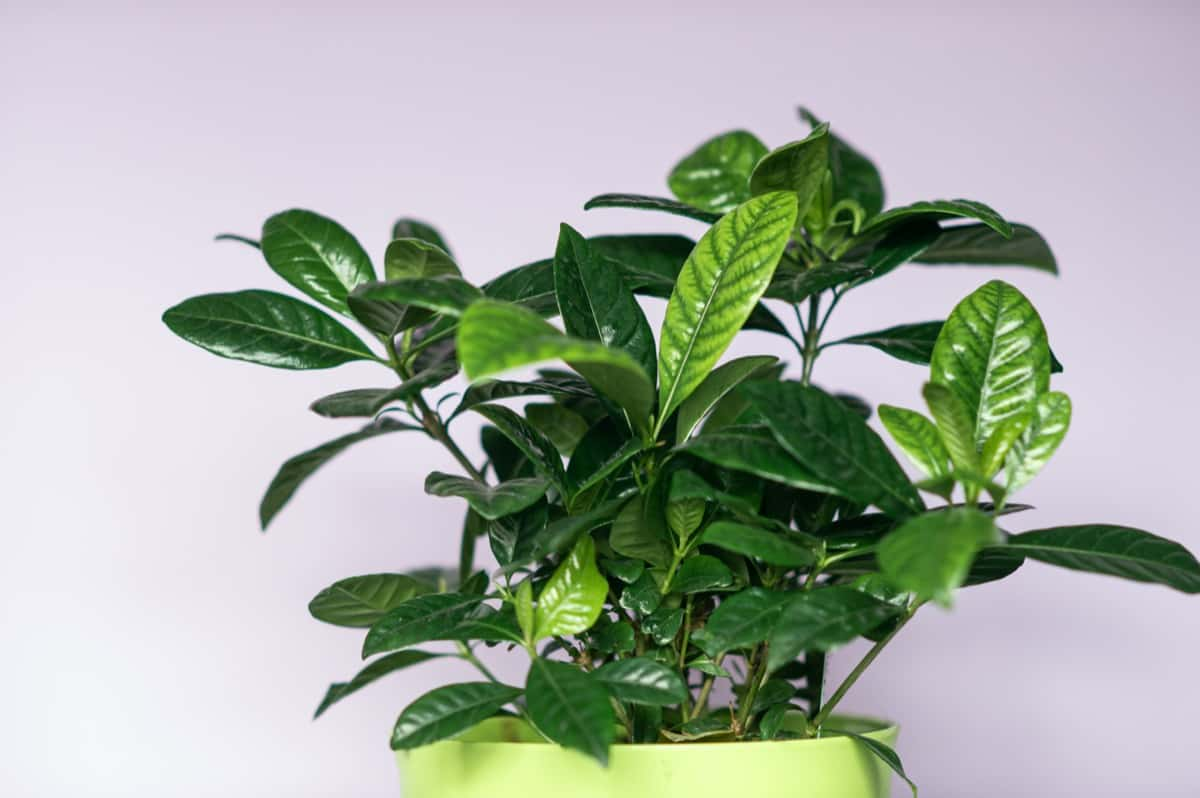
Place the pot in a bright spot from direct sunlight and wait for roots to form. This can take anywhere from 3 to 6 weeks. Once your Gardenia cuttings have been rooted, you can transplant them into individual pots filled with regular potting mix. Be sure to give them plenty of water and fertilize them regularly. With proper care, your propagated Gardenias should bloom within a year or two.
Gardenia plant care
Fertilizer requirement for growing Gardenia in pots
- When growing Gardenias in pots, it is important to use a specifically designed fertilizer for potted plants. Gardenias are heavy feeders, so a good quality fertilizer with a high nitrogen content is essential. A slow-release fertilizer is also a good option, as it will provide a steady supply of nutrients over a longer period.
- Gardenias are beautiful, fragrant flowers that add beauty to any home. While they can be tricky to grow, your Gardenias will thrive with a little care and attention. Fertilizer requirements are important to keep in mind when growing Gardenias in pots.
- Gardenias are heavy feeders and must be fertilized every two weeks during the growing season. Use a high-quality fertilizer that is specifically formulated for Gardenias. Apply the fertilizer, careful not to get any on the leaves or flowers. Water thoroughly after applying fertilizer.
In case you missed it: Key Rules to Grow String of Pearls Succulent Indoors: Explained in Simple Steps
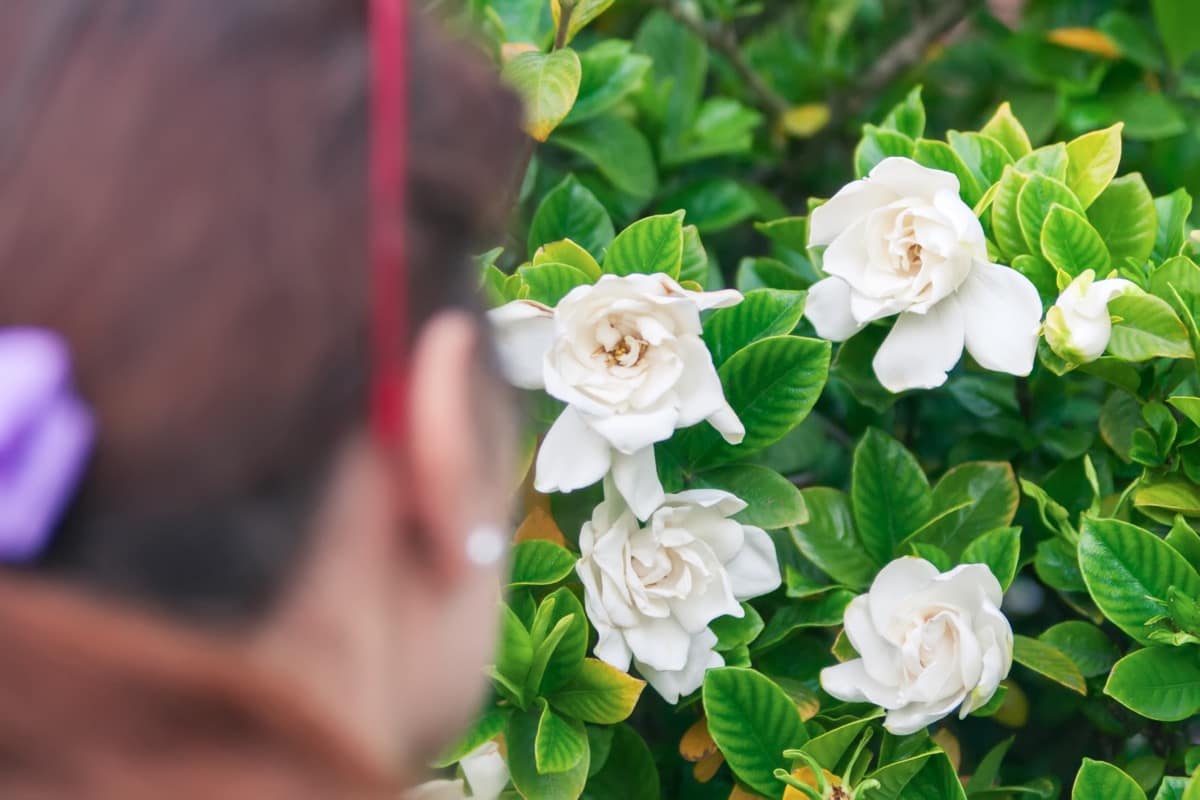
Pruning Gardenia plant
Pruning a Gardenia plant is a simple process that can be done with just a few household tools. First, cut away any dead or dying branches from the plant. Next, trim back any long or straggly branches to promote new growth. Finally, cut away any suckers that may be growing from the base of the plant. Gardenias can be pruned into various shapes, so feel free to get creative. Once the plant has been pruned, regularly fertilize it with a high-quality Gardenia fertilizer and water. Your Gardenia will thrive and produce beautiful blooms for years with proper care.
Repotting Gardenia plant
When it comes to repotting Gardenia plants, the process is quite simple. The first step is to remove the plant from its current pot. Once the plant is removed from the old pot, you will need to check the roots to see if they are root bound. If the roots are root bound, gently loosen them before placing the plant in a new pot.
Once the plant is in its new pot, you must fill it with fresh soil. Gardenia plants prefer acidic soil, so use a soil mix designed for acid-loving plants. After the pot is filled with fresh soil, water the plant deeply and place it in a location that receives bright indirect sunlight.
Gardenia plant care in winter
When it comes to Gardenia care in winter, you should remember a few things. First, Gardenias are tropical plants that don’t do well in cold weather. If you live in an area with freezing temperatures, you’ll need to bring your Gardenia indoors or protect it with a frost blanket. Second, Gardenias need a lot of humidity, so be sure to mist them regularly or set them on a pebble tray with water. Lastly, Gardenias need bright light but not direct sunlight, so find a spot near a window where they can get plenty of indirect light.
Pests and diseases of Gardenia and their control
Most important aspect of keeping Gardenias healthy is controlling pests and diseases. Several common pests and diseases can affect Gardenias, but they can be controlled with proper care and treatment.
Common pests affecting Gardenias include aphids, scales, whiteflies, and thrips. These pests can suck the sap from the plant, causing it to be weakened and stressed. They can also spread diseases to the plant. To control these pests, it is important to regularly inspect your Gardenia plants and remove any pests you see. You can also use insecticidal soap or other pesticides to help control them.
Gardenias’ common diseases include root rot, powdery mildew, stem rot, and leaf spot. These diseases can cause the leaves to turn yellow, drop off the flowers to wilt, and stunt the plant. To control these diseases, it is important to water your Gardenia plants properly and avoid overwatering. You should also remove any diseased leaves or stems from the plant. If necessary, you can use fungicides to help control these diseases.
In case you missed it: Cool-season Plants for Pollinators: Vegetables, Flowers, Fruits, Shrubs, and Herbs
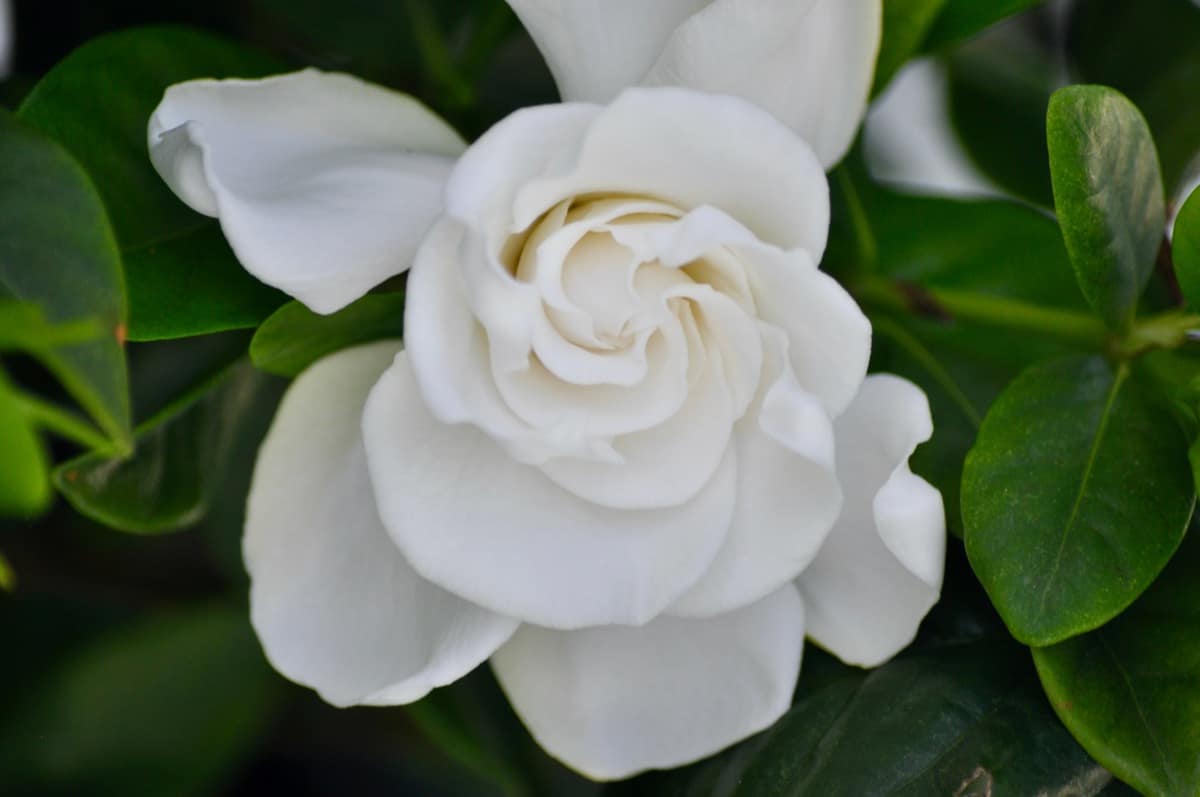
Conclusion
Gardening with Gardenia plants in pots can be a rewarding experience. With the right amount of care, these fragrant beauties will reward you with abundant blooms throughout the year. It’s important to remember to water your Gardenia plant, use fertilizer properly, provide afternoon shade or filtered sunlight and repot them when needed. With proper care and maintenance, you’ll have beautiful blooming Gardenias that bring life into any space.
- Broccoli Seed Germination and Selection
- Asparagus Seed Germination and Variety Selection
- Seasonal Flower Gardening: Best Practices for Spring, Summer, Fall, and Winter
- How to Grow Hibiscus from Flower
- Plantation Ideas for Home Decoration: A Beginners Guide
- Flower Garden Designs and Layouts for Beginners
- Planting and Spacing Techniques in Papaya: A Beginner’s Guide
- Growing Gold: Essential Techniques for Planting Pineapples
- How to Make Kalanchoe Plant Bushy: Home Remedies and Solutions
- 11 Reasons Why Your Gardenia is Not Blooming: Home Remedies and Solutions
- Eco Elegance: The Guide to Designing a Drought-Tolerant Landscape
- Gardening on a Slope: Strategies for Hillside Landscaping
- Nourish and Flourish: Top Organic Mulches for Thriving House Plants
- Everything You Want to Know about Indian Mogra Flower: Discover Uses and Growing
- Green Thumb Success: Expert Tips for Cultivating Greenhouse Pumpkins All Year Round
- Maximize Growth & Flavor: The Ultimate Guide to Companion Planting in Herb Gardens
- How to Control Rhododendron Problems Naturally: Home Remedies and Organic Ways to Fix Them
- Natural Magic: The Remarkable Benefits of Cinnamon for Plants
- Best Steps to Revive Dying Tulip with Natural and Organic Treatment
- 10 Reasons Why Your Angel Trumpet is Not Blooming: Remedies and Treatment
- How to Fix Periwinkle Leaf and Flower-Related Problems: Natural Remedies and Solutions
- How to Fix Zinnias Leaf and Flower Problems: Discover Natural and Home Remedies
- Organic Steps to Induce Lemon Tree Flowers: A Comprehensive Guide
- Bloom Booster: Crafting the Perfect Homemade Bougainvillea Fertilizer
- Optimizing Growth: A Guide to Applying NPK Fertilizer for Potted Plants
- 10 Best Homemade Fertilizers for Rubber Plant: DIY Recipes and Application Method
- How to Boost Female Pumpkin Flowers: Effective Steps for More Flowers and High Yields
- Transform Your Indoor Garden: Top Benefits of Pink Salt for Houseplants
- 10 Best Homemade Fertilizers for Peacock Plants (Calathea): Easy DIY Guide
- Unlock Blooms: 9 Reasons Why Your Potted Chrysanthemum is Not Blooming
- 8 Reasons Why Your Potted Hibiscus is Not Blooming: Fix it with Simple Solutions
- Unlock Blooms: 9 Key Reasons Your Potted Frangipani Won’t Flower
- 10 Reasons Why Is My Ice Plant Not Blooming: Remedies and Treatment
- 10 Reasons Why My Potted Hydrangea Not Blooming: Treatment and Remedies
- 10 Reasons Why is My Wisteria Not Blooming: Remedies and Treatment
- 10 Reasons Why is My Goldfish Plant Not Blooming: Remedies and Treatment
Leaves of my gardeni plants gets yellow in colour. At present most of the leaves are fallen. I try to take care as suggested by you. Kindly help. Thanks